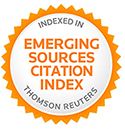Analisis de riesgo de los fondos mutuales de renta variable venezolanos, pertenecientes a la asociación venezolana de administradoras de fondos y presentes hasta el 31 de agosto del 2004
Resumen
Se pretende hacer un análisis de riesgo top down de los dos fondos mutuales de renta variable que
pertenecen a la Asociación Venezolana de Administradoras de Fondos al 31 de Agosto de 2004, Portafolio
Mercantil Acciones y Banesco Renta Variable. Hacer un análisis top down implica entender la burbuja especulativa
mundial según Naredo y su repercusión en el mercado bursátil venezolano a través de la globalización financiera.
Luego explicar la burbuja especulativa del Indice Bursátil Caracas en donde la causa principal es el excedente de
liquidez monetario que medimos a través de depósitos a la vista emitido por el Banco Central de Venezuela.
Luego de entender el riesgo de romperse la burbuja especulativa, procedemos a aplicar los métodos tradicionales
de medir el riesgo. El método de la Teoría del Arbitraje de Precios es aplicado en una aproximación para entender
como factores comunes de riesgo pueden influir en el Indice Bursátil Caracas que a su vez esta correlacionado
con el rendimiento de los dos fondos mutuales. Más exacto es luego el análisis de beta y desviación estándar
aplicando el método de Mínimos Cuadrados Ordinarios y la salida de EVIEW (programa econométrico). Luego
se aplican los índices de performance (desempeño) de Sharpe, Treynor y Jensen aplicados a los dos fondos
mutuales y al Indice Bursátil Caracas. Por último se hace un análisis fundamental a ambos fondos que permite
la información financiera de los prospectos.
ANALISIS OF RISK OF FUNDS MUTUALES OF VARIABLE RENT VENEZUELAN, PERTAINING To
The VENEZUELAN ASSOCIATION OF ADMINISTRATORS OF Funds And PRESENTS UNTIL
The 31 OF AUGUST Of The 2004.
This paper shows how the Intellectual Capital plays a main role adding value to nowadays firms. So, it helps to look for new
action lines –as well as of control and management ones– which give answers to the current competitive demands, because
the changes demanded by the firms of this age, not only in their conception but in their way to display the financial information
to take decisions, since the value of the intellectual content is overcoming openly to the value of material content.
For this reason, the firms which want to be competitive and to obtain success and prestige should invest in the generation
and renovation of their intangible assets, in order to enact an appropriate countable policy, assuring their administration and
promoting their development, as much in their internal environment as in their external one.
Evidently, many of the firms which have obtained a great success in the last years, have made it on the base of factors
foreign to material goods, but for developing their intangible assets. Consequently, this paper attempts to expose and explain
–by a widespread way– how and where it is possible to create and develop the Intellectual Capital inside a firm.
Key words: intellectual capital, intangible assets, generator of success, management.
Palabras clave
Texto completo:
PDFP-ISSN 1317-8822 E-ISSN 2477-9547
DOI: https://doi.org/10.53766/VIGEREN
Twitter: @VisionGerenci
Facebook: Visiongeren
Instagram: @visiongerenci
![]()
Todos los documentos publicados en esta revista se distribuyen bajo una
Licencia Creative Commons Atribución -No Comercial- Compartir Igual 4.0 Internacional.
Por lo que el envío, procesamiento y publicación de artículos en la revista es totalmente gratuito.
 |  |  | |
 |  |  |  |
 |  | | |
| | |||
